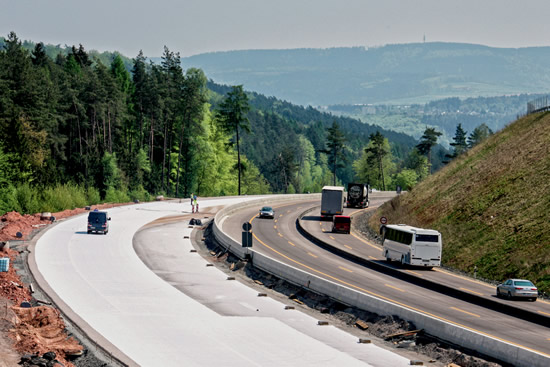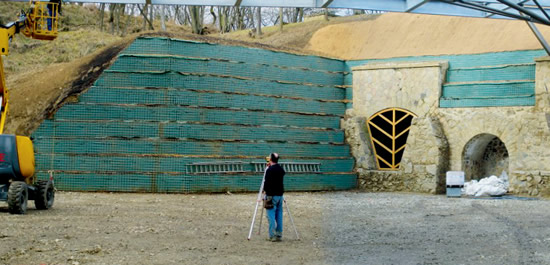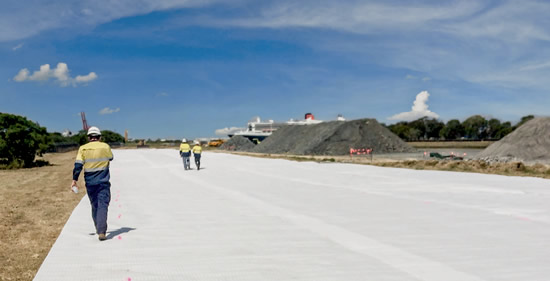

 Though 2015 saw a number of enormous challenges for manufacturers, the geosynthetics market found a number of successes. NAUE, which has its international headquarters in Germany, has just released its year-end edition of NAUE News. The issue includes a number of interesting geosynthetic projects from year, and, in keeping with tradition, it opens with a letter about the how the company and the larger geosynthetics industry have fared in the global marketplace.
Though 2015 saw a number of enormous challenges for manufacturers, the geosynthetics market found a number of successes. NAUE, which has its international headquarters in Germany, has just released its year-end edition of NAUE News. The issue includes a number of interesting geosynthetic projects from year, and, in keeping with tradition, it opens with a letter about the how the company and the larger geosynthetics industry have fared in the global marketplace.
DOWNLOAD A COPY OF NAUE NEWS #45 (PDF)
In the foreward, the company writes on how many manufacturers, particularly in Europe, encountered unique raw materials challenges. Prices rose sharply, deviating uncharacteristically from the price of oil. Simultaneously, multiple suppliers declared a Force Majeure situation. This led to supply contracts being canceled or reduced significantly. Manufacturers were left in a conflict between building geosynthetic stock for quick response to common projects and being able to efficiently serve the larger, more complex projects that require greater specialization and project-specific solutions.
NAUE responded with the acquisition of a 30,000m2 neighboring property to its primary manufacturing facility. The new warehouse will now accommodate a larger stock space to buttress the company—and its customers—against potential future raw material supply crunches.
Still, many successes were present. Demand for geosynthetics was up and previously strained markets, such as Spain and Portugal, returned.
Additional details in the forward include discussion of the weak Russian rouble and how that impacts markets, key events for geosynthetics in 2016, and the introduction of nonwovens production in Kuala Lumpur for NAUE, where the company has operated a GCL plant for the Asian market.
GEOSYNTHETIC PROJECTS
On the geosynthetic project side of the issue, the company details the use of Secutex® concrete nonwovens for use in highway projects; coastal defense in England; reinforcement strategies for Europe’s largest urban development; the role of geosynthetics in Brisbane’s new parallel runways; green walls to support the redevelopment of a historic fortress; and updating landfills in Europe’s newer member countries (in this case, Romania).
These stories detail uses of geotextiles, geomembranes, geogrids, and GCLs; underwater installation of products; sustainable strategies on sensitive project sites; and the extraordinary engineering that goes into major developments and how geosynthetics, which are seemingly such a small part of these works, enable so much to occur, reduce costs, and improve environmental performance.
Finally, the company also includes notes on its new SecuCalc 2.2 unpaved base reinforcement software and its new mining industry brochure.
DOWNLOAD A COPY OF NAUE NEWS #45 (PDF)
For access to other issues of this publication or more information on products, projects, and engineering from NAUE, visit www.naue.com.
**
See also:











